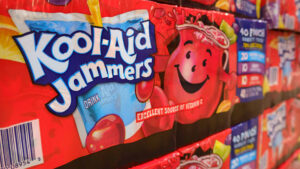Kraft Heinz Takes a Bold Step: The End of Artificial Dyes in Food Products
In a groundbreaking move that resonates with current trends towards healthier eating, Kraft Heinz announced on April 27, 2025, that it will eliminate FD&C artificial dyes from its products by the end of 2027. This decision is a significant stride in the food industry, as consumers increasingly prioritize transparency and healthier ingredients in the items they purchase.
What This Means for Consumers
Kraft Heinz revealed that approximately 10% of its U.S. offerings currently contain FD&C colors, synthetic additives known for enhancing the visual appeal of food. Popular brands like Kool-Aid, Crystal Light, Jell-O, and MiO will undergo notable reformulations as a result of this decision. Pedro Navio, President of North America at Kraft Heinz, mentioned that the company has previously taken steps towards removing artificial colors and preservatives, such as in their iconic Kraft Macaroni & Cheese back in 2016. With Heinz ketchup also free of artificial dyes, this latest initiative reflects the company’s ongoing commitment to nutritional integrity.
The Catalyst: Regulatory Pressure
This announcement comes amid increasing pressure from key regulatory bodies, including the U.S. Food and Drug Administration (FDA) and the Department of Health and Human Services, now spearheaded by Secretary Robert F. Kennedy Jr. Under his leadership, the FDA is phasing out petroleum-based synthetic dyes and promoting the use of natural alternatives. This movement aligns with the broader "Make America Healthy Again" platform, which is gaining traction across multiple sectors of the food industry. As a result, businesses like Kraft Heinz are not only reacting to consumer demand but also proactively aligning with regulatory expectations.
The Business Implications
Removing artificial dyes could have mixed effects on Kraft Heinz’s sales. While some consumers may view the reformulation as making their favorite products healthier, the potential loss of vivid coloration might also affect consumer attraction. It will be interesting to watch how Kraft Heinz navigates this delicate balance.
Beyond merely stripping out artificial colors, Kraft Heinz has been making over 1,000 recipe changes in the past five years to enhance nutritional value. They are focusing on delivering delicious, affordable food while maintaining public trust—efforts that are sure to set them apart in a fluctuating market.
Industry-Wide Shift
The implications of Kraft Heinz’s strategy extend beyond their own product line; this marks a potential turning point in the broader food industry. Major players—including PepsiCo, General Mills, and Tyson Foods—are also reconsidering their use of artificial ingredients. Regular meetings between top executives and regulatory bodies reflect a collective industry acknowledgment that health considerations are becoming paramount for consumers.
What’s Next?
As we move towards a healthier future, food companies will need to adapt rapidly to maintain relevance. At Extreme Investor Network, we believe this move signals a potential shift in consumer purchasing patterns that could force other companies to follow suit. It raises questions about future product launches and the innovation trajectories for companies choosing to forgo synthetic additives.
Kraft Heinz has positioned itself at the forefront of this evolution, but the road ahead will be one of careful recalibration in response to both consumer expectations and regulatory landscapes.
Conclusion
In summary, Kraft Heinz’s commitment to eliminating artificial dyes is not just about compliance—it’s a strategic maneuver that reflects a broader societal shift towards health and wellness. The stakes are high, but the rewards for being a responsible and transparent player in the food industry could be even greater. As always, we’ll keep you updated on these essential industry changes—stay tuned!
For more insights like these, make sure to explore our resources at Extreme Investor Network where we continually analyze market trends and their implications.

